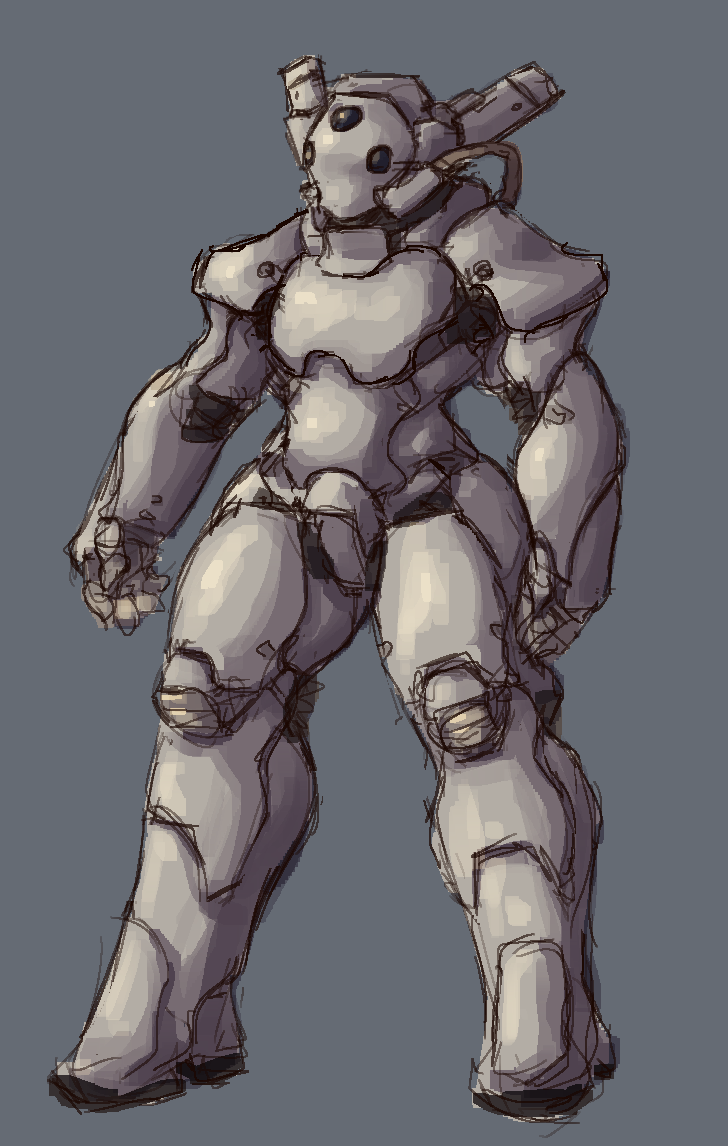Shell Frames

Shell Frames are derived from bloodless technology. The human body is the most complex and versatile agent ever devised, but is difficult to control when alive. By engineering an actuated frame of armour to conform to the shape of a cadaver, its strengths can be exploited while covering the major vulnerabilities. commands sent from the cranium can be distributed around the shell, making for a responsive and sophisticated unit, called a "Dead Engine". It is unknown if the commonly deployed faceplates have any particular function, but it has been suggested that the metallic human visage may have emerged as a psychological agent.
A human usable frame was derived from Dead Engines. The proportions had to be adjusted to accomodate a live human, with their increased fat and muscle mass, but the internal control system remained largely unchanged. how this system receives its controls had to be reengineered, as the original relayed commands from an external source into the nervous system. The new system interfaces with the operator's blood, using the psiohematic effect to control all systems. The head unit was altered. The array of sensors is preseved in the design of this headgear, but to accomodate a live operator tubing is added to redirect filtered or stored air into the operator's lungs. The power source was also rebuilt, prioritising internal power rather than the typical umbilical deployment, though the umbilical port is still preserved.
The complete system is a frame of armour enrobing the entire operator, augmenting their muscles with actuators, and replacing their senses with streams of information. A float setup is integrated into the frame, with a primary engine on the back of the hip, and two stabilisers above the knees. A hand is far too complex for actuated armour to fit around one, so the operator's hand terminates in the forearm, with an entirely mechanical substitute below it. The feet are substituted in the same manner, which combined with the large headgear, results in a silhouette standing around a foot higher than its operator.
The primary drawbacks of these frames are a high power usage, rapidly consuming blood when not powered externally, and a potent discomforting effect on the operator which grows over time. As such, shell frames are typically used in brief applications.